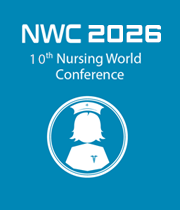Title : Nurse leaders influencers of evidence to practice
Abstract:
Evidence-based practice (EBP) combines research evidence, clinical expertise, and patient preferences, essential for informed decision-making. The complexity of the healthcare environment necessitates collaboration among stakeholders to implement knowledge effectively. However, routine disruptions, insufficient mentorship and resources, and organizational barriers delay knowledge translation. Effective knowledge dissemination requires more than resources—it demands a holistic, evidence-based approach that aligns with the organizational culture. The nurse leadership role is pivotal as an influencer and advocate for quality patient-centered care. Nurse leaders must be empowered to lead proactive strategies that address barriers and leverage facilitators, enabling successful technology-driven transformation. This approach positions healthcare organizations to revolutionize patient care through, with nurse leaders at the forefront of this revolution. Adopting new technologies in healthcare is influenced by various barriers and facilitators. Barriers often include inadequate training, resistance to change, insufficient funding, and data privacy and security concerns. Organizational challenges like poor leadership support and misaligned workflows can also hinder adoption. Conversely, facilitators include the pivotal role of strong leadership, comprehensive training programs, stakeholder engagement, and demonstrating the technology's value in improving efficiency, patient outcomes, and cost-effectiveness. Creating a culture of innovation, addressing user concerns proactively, and ensuring compatibility with existing systems are critical for successful technology adoption. Numerous technologies are offered, such as machine learning (ML) and blockchain technology, present opportunities for nurse leaders to promote healthcare transparency, security, and efficiency. The Innovative Model of predictive analytics with machine learning (ML) algorithms can anticipate and identify problems early and patient deterioration before clinical symptoms arise. Implementing sepsis treatment protocols in clinical decision support systems (CDSS) in emergency departments is an example of predictive analysis. These systems, combined with real-time alerts in electronic health records (EHRs), have reduced deaths from sepsis. Blockchain technology, a reliable system for securely storing and sharing information, is a significant asset for nurse leadership. Blockchain technology makes healthcare data resistant to alteration or tampering, providing a secure platform for clinicians to track and ensure that care follows evidence-based practice (EBP) guidelines across different locations. Blockchain also streamlines administrative processes, reducing fraud, enhancing the accuracy of credentialing and licensure tracking, and enabling secure sharing of workforce and healthcare data. This reliability of blockchain technology provides nurse leaders with a sense of security in their decision-making, while the efficiency makes them more productive. A transformational framework enables exploration of how nurse leaders leverage their influence to facilitate evidence translation. Leaders can use a quality improvement methodology to assess the impact of overcoming barriers to EBP. Such strategies for optimizing knowledge transfer include fostering interprofessional collaboration, engaging knowledge translation specialists, and recognizing and celebrating staff achievements. By partnering with experts in informatics, technology integration, and implementation science, nurse leaders can demonstrate innovation. By prioritizing targeted education programs, advocating for funding, and fostering a culture of innovation, nurse leaders can ensure that their organizations are at the forefront of technological advancement, driving stakeholder engagement, operational efficiency, and patient care improvements.



